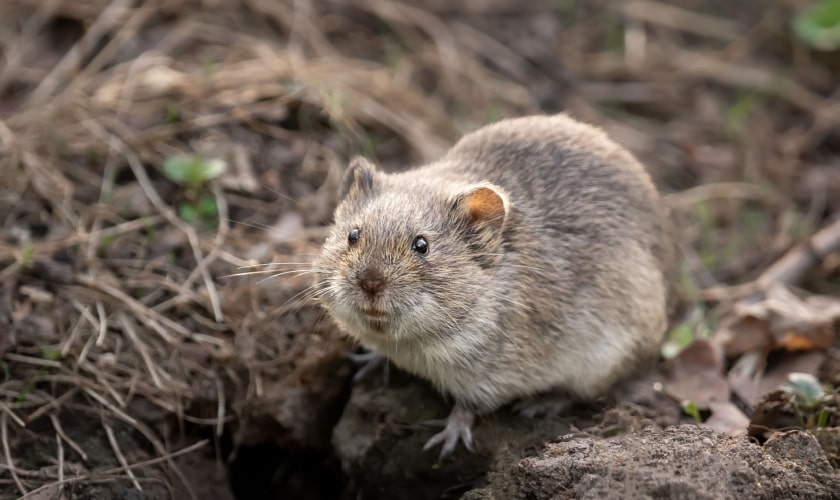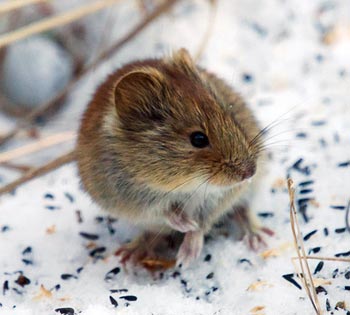Recognizing Vole Yard Damage and Exactly How to Battle It
Recognizing Vole Yard Damage and Exactly How to Battle It
Blog Article
Comprehensive Overview to Effective Vole Insect Control: Infestation Recognition and Treatment Approaches
In the realm of efficient pest control, vole invasions posture a distinct obstacle that demands a calculated strategy. By exploring the subtleties of vole behavior, comprehending key indications of invasion, and evaluating a range of control options, one can create a detailed approach to combat these evasive parasites.
Understanding Vole Behavior
Vole habits is identified by their tunneling practices and quick reproduction rates, making them a difficult insect to manage effectively. Their quick reproductive price additional complicates control initiatives, with ladies capable of producing multiple trashes in a solitary year, each containing numerous children.
Recognizing vole habits is important for reliable pest control strategies. By identifying their burrow places, keeping track of feeding locations, and executing targeted control techniques, such as capturing or habitat alteration, vole problems can be taken care of effectively.
Signs of Vole Problem

Avoidance Strategies
Carrying out effective avoidance approaches is important in decreasing vole problems and protecting plant life from their devastating feeding practices (vole pest control). To avoid vole problems, it is necessary to start by removing potential food sources and shelter. Keep lawn and greenery cut short, remove weeds and debris, and maintain a tidy garden or lawn to make the location much less eye-catching to voles. Mounting obstacles such as equipment towel or below ground fencing can additionally help hinder voles from going into particular areas. Additionally, minimizing excess dampness by fixing dripping pipelines and ensuring appropriate drain can make the atmosphere less welcoming for voles.
Routinely inspecting the building for signs of vole activity, such as paths and delve openings, is important for very early discovery and prompt action. If vole task is thought, think about making use of traps or repellents purposefully placed near their pathways.
Non-Lethal Control Techniques
To properly take care of vole populations while prioritizing humane techniques, non-lethal control techniques offer functional services for reducing vole damages in landscapes and gardens. One effective approach is using physical obstacles such as hardware towel or cord mesh to protect vulnerable plants. These obstacles can be hidden at the very least 12 inches deep and bent at a 90-degree angle to stop voles from delving below. In addition, habitat alteration can deter voles by decreasing their chosen food sources and hiding spots. Maintaining a well-mowed grass, getting rid of particles, and maintaining plant life cut can make the atmosphere less attractive to voles.

Lethal Control Options
One effective technique for addressing vole infestations in landscapes and gardens includes the strategic use dangerous control options. When encountered with a severe vole infestation that non-lethal techniques have stopped working to have, carrying out dangerous control steps comes to be essential. One generally employed dangerous control choice is the usage directory of breeze traps. These traps are created to quickly and humanely eliminate voles upon activation, making them a preferred selection for many gardeners and landscapers. To raise the effectiveness of snap traps, it is suggested to place them in locations where vole task is high, such as along paths or near burrow entries. Another dangerous control option is the usage of hazardous lures especially developed to target voles. These lures contain toxin that is consumed by the voles, resulting in their ultimate demise. Caution should be exercised when using toxic baits to avoid damage to non-target animals or pets. Generally, when using dangerous control alternatives, it is important to do so responsibly and according to regional guidelines to successfully handle vole invasions.
Verdict
To conclude, reliable vole insect control requires an extensive understanding of vole habits, recognition of indications of infestation, application of avoidance approaches, and usage of both dangerous and non-lethal control methods. By integrating these methods, individuals can efficiently manage vole populaces and safeguard their home from damages. It is necessary to resolve vole invasions without delay to avoid additional concerns and lessen the influence on the surrounding atmosphere.
Offered the intricate tunnel systems and fast reproduction rates particular of voles, identifying the signs of vole invasion ends up being essential in effective bug control. One of the key indications of vole existence is the visibility of surface area runways or trails in turf or snow, typically regarding 1-2 inches vast, developed as voles take a trip between their burrows and food sources.To successfully handle vole populaces while prioritizing humane methods, non-lethal control methods supply practical you can try here solutions for decreasing vole damage in yards and landscapes.One effective method for attending to vole invasions in gardens and landscapes involves the tactical use of lethal control options. vole control.In final thought, efficient vole bug control needs a detailed understanding of vole habits, identification of indicators of invasion, implementation of avoidance techniques, and usage of both non-lethal and deadly control methods
Report this page